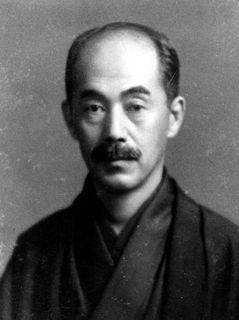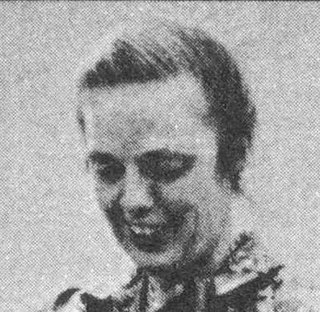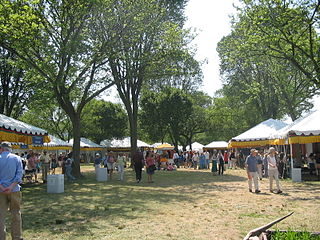
Folklore is the body of culture shared by a particular group of people; it encompasses the traditions common to that culture, subculture or group. This includes oral traditions such as tales, legends, proverbs and jokes. They include material culture, ranging from traditional building styles to handmade toys common to the group. Folklore also includes customary lore, taking actions for folk beliefs, the forms and rituals of celebrations such as Christmas and weddings, folk dances and initiation rites. Each one of these, either singly or in combination, is considered a folklore artifact or traditional cultural expression. Just as essential as the form, folklore also encompasses the transmission of these artifacts from one region to another or from one generation to the next. Folklore is not something one can typically gain in a formal school curriculum or study in the fine arts. Instead, these traditions are passed along informally from one individual to another either through verbal instruction or demonstration. The academic study of folklore is called folklore studies or folkloristics, and it can be explored at undergraduate, graduate and Ph.D. levels.

Kunio Yanagita was a Japanese author, scholar, and folklorist. He began his career as a bureaucrat, but developed an interest in rural Japan and its folk traditions. This led to a change in his career. His pursuit of this led to his eventual establishment of Japanese native folkloristics, or minzokugaku, as an academic field in Japan. As a result, he is often considered to be the father of modern Japanese folklore studies.

Folklore studies, less often known as folkloristics, and occasionally tradition studies or folk life studies in the United Kingdom, is the branch of anthropology devoted to the study of folklore. This term, along with its synonyms, gained currency in the 1950s to distinguish the academic study of traditional culture from the folklore artifacts themselves. It became established as a field across both Europe and North America, coordinating with Volkskunde (German), folkeminner (Norwegian), and folkminnen (Swedish), among others.
Chinese folklore encompasses the folklore of China, and includes songs, poetry, dances, puppetry, and tales. It often tells stories of human nature, historical or legendary events, love, and the supernatural. The stories often explain natural phenomena and distinctive landmarks. Along with Chinese mythology, it forms an important element in Chinese folk religion.

Folk art covers all forms of visual art made in the context of folk culture. Definitions vary, but generally the objects have practical utility of some kind, rather than being exclusively decorative. The makers of folk art are typically trained within a popular tradition, rather than in the fine art tradition of the culture. There is often overlap, or contested ground with 'naive art'. "Folk art" is not used in regard to traditional societies where ethnographic art continue to be made.
The Archive of Folk Culture was established in 1928 as the first national collection of American folk music in the United States of America. It was initially part of the Music Division of the Library of Congress and now resides in the American Folklife Center.
Public folklore is the term for the work done by folklorists in public settings in the United States and Canada outside of universities and colleges, such as arts councils, museums, folklife festivals, radio stations, etc., as opposed to academic folklore, which is done within universities and colleges. The term is short for "public sector folklore" and was first used by members of the American Folklore Society in the early 1970s.

Steve Roud is the creator of the Roud Folk Song Index and an expert on folklore and superstition. He was formerly Local Studies Librarian for the London Borough of Croydon and Honorary Librarian of the Folklore Society.
Betty Jane Belanus is an American writer and folklorist. Belanus completed her graduate work in folklore at Indiana University and has been with the Smithsonian Institution since 1987, ultimately working with the Smithsonian Center for Folklife and Cultural Heritage as an education specialist. Part of her work with the Smithsonian has been the curating of programs for the Smithsonian's annual Folklife Festival, including the 2009 Wales program. She has worked on "Smithsonian Inside Out", on the occupational life of the Smithsonian.
The Center for Folklife & Cultural Heritage (CFCH) is one of three cultural centers within the Smithsonian Institution in the United States. Its motto is "culture of, by, and for the people", and it aims to encourage understanding and cultural sustainability through research, education, and community engagement. The CFCH contains (numerically) the largest collection in the Smithsonian, but is not fully open to the public. Its budget comes primarily from grants, trust monies, federal government appropriations, and gifts, with a small percentage coming from the main Smithsonian budget.

Mormon folklore is a body of expressive culture unique to members of The Church of Jesus Christ of Latter-day Saints and other sects of Mormonism. Mormon folklore includes tales, oral history, popular beliefs, customs, music, jokes, and material culture traditions. In folklore studies, Mormons can be seen as a regional group, since the core group of Mormon settlers in Utah had a common religion and had to modify their surroundings for survival. This historical regional area includes Utah, Southeastern Idaho, parts of Wyoming and eastern Nevada, and a few towns in eastern Arizona, southern Alberta, northwestern New Mexico, southern Colorado, and northern Chihuahua, Mexico.
City Lore: the New York Center for Urban Culture was founded in 1986 and was the first organization in the United States devoted expressly to the "documentation, preservation, and presentation of urban folk culture." Their mission is to produce programs and publications that convey the richness of New York City—and America's—living cultural heritage. In addition to regular programming that includes the Place Matters Awards and the People's Hall of Fame, the organization works with a wide range of partners to develop exhibitions, publications, and documentary films, and to advocate for the rights of street performers, ethnic clubs, and other grassroots cultural expressions in New York City. City Lore works in four cultural domains: urban folklore and history, preservation, arts in education, and grassroots poetry traditions. Described by Sonnet Takahisa of the September 11th Memorial Museum as "wise renegades," their programs include People's Poetry Project, Place Matters and City of Memory.

Bess Lomax Hawes was an American folk musician, folklorist, and researcher. She was the daughter of John Avery Lomax and Bess Bauman-Brown Lomax, and the sister of Alan Lomax and John Lomax Jr.

The Smithsonian Folklife Festival, launched in 1967, is an international exhibition of living cultural heritage presented annually in the summer in Washington, D.C. in the United States. It is held on the National Mall for two weeks around the Fourth of July holiday. The Smithsonian Center for Folklife and Cultural Heritage produces the Festival.

Bangladeshi Folk Literature constitutes a considerable portion of Bengali literature. Though it was created by illiterate communities and passed down orally from one generation to another it tends to flourish Bengali literature. Individual folk literature became a collective product and assumes the traditions, emotions, thoughts and values of the community.

In the study of folklore, the folk process is the way folk material, especially stories, music, and other art, is transformed and re-adapted in the process of its transmission from person to person and from generation to generation. The folk process defines a community—the "folk community"—in and through which folklore is transmitted. While there is a place for professional and trained performers in a folk community, it is the act of refinement and creative change by community members within the folk tradition that defines the folk process.

Canadian folklore is the traditional material that Canadians pass down from generation to generation, either as oral literature or "by custom or practice". It includes songs, legends, jokes, rhymes, proverbs, weather lore, superstitions, and practices such as traditional food-making and craft-making. The largest bodies of folklore in Canada belong to the aboriginal and French-Canadian cultures. English-Canadian folklore and the folklore of recent immigrant groups have added to the country's folk.
Folk and traditional arts are rooted in and reflective of the cultural life of a community. They encompass the body of expressive culture associated with the fields of folklore and cultural heritage. Tangible folk art includes objects which historically are crafted and used within a traditional community. Intangible folk arts include such forms as music, dance and narrative structures. Each of these arts, both tangible and intangible, was originally developed to address a real need. Once this practical purpose has been lost or forgotten, there is no reason for further transmission unless the object or action has been imbued with meaning beyond its initial practicality. These vital and constantly reinvigorated artistic traditions are shaped by values and standards of excellence that are passed from generation to generation, most often within family and community, through demonstration, conversation, and practice.

Folk and traditional arts are rooted in and reflective of the cultural life of a community. They encompass the body of expressive culture associated with the fields of folklore and cultural heritage. Tangible folk art includes historic objects which are crafted and used within a traditional community. Intangible folk arts include forms such as music, dance and narrative structures. Tangible and intangible folk arts were developed to address a need, and are shaped by generational values derived from family and community, through demonstration, conversation and practice.










